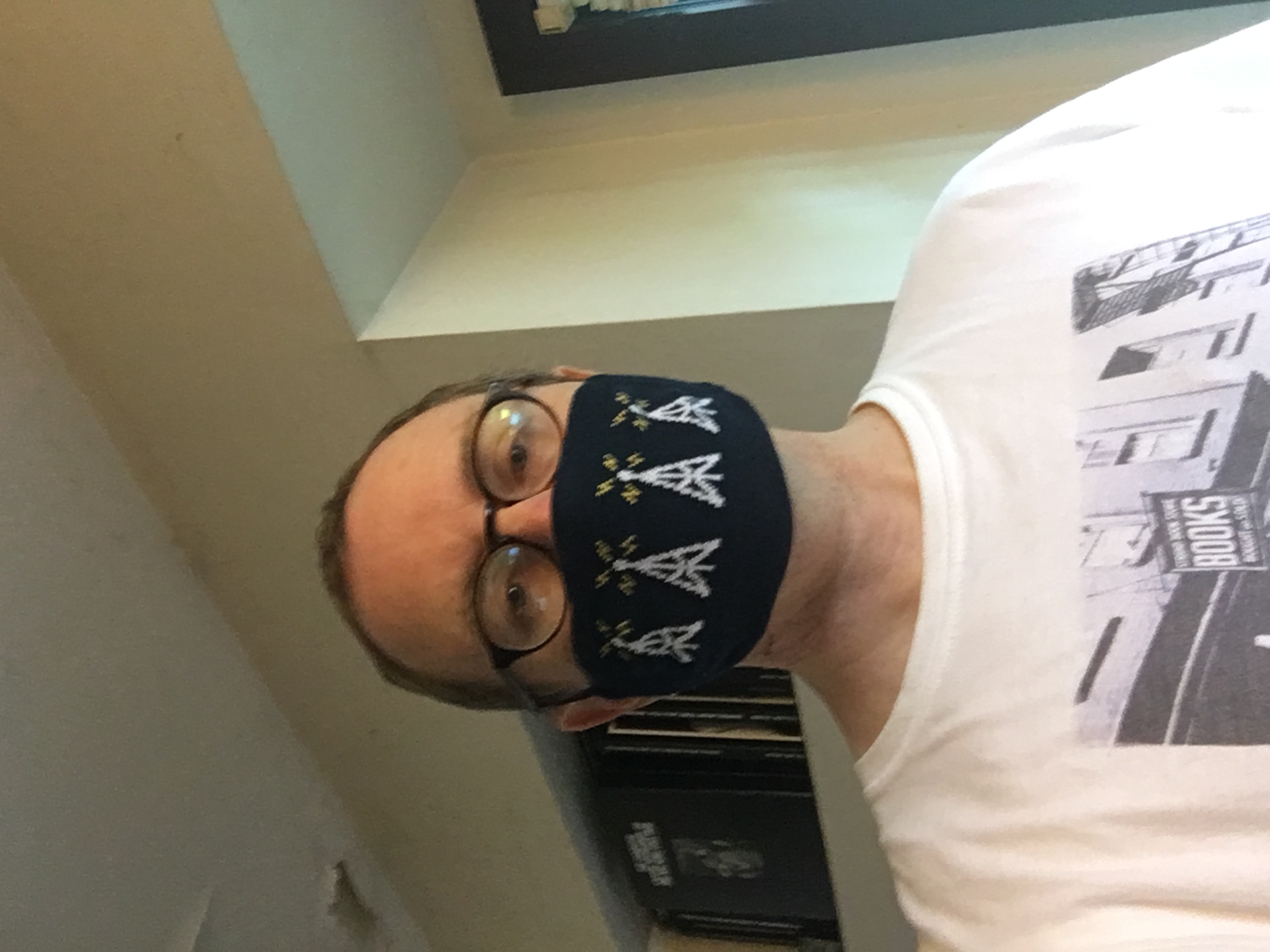-
Posts
18,046 -
Joined
-
Last visited
-
Days Won
2 -
Donations
0.00 USD
Content Type
Profiles
Forums
Events
Blogs
Everything posted by ghost of miles
-

MLB 2023: how ya like it now?
ghost of miles replied to ghost of miles's topic in Miscellaneous - Non-Political
Ohtani has a torn UCL and likely won’t pitch again till 2025. End of the unicorn show for now, at least. -
Lots of Barry Keiner to be heard on this new release:
-
Clearing the decks to read John Szwed’s new biography of Harry Smith:
-

Bluebird Centennial Collection(s)
ghost of miles replied to Chuck Nessa's topic in Miscellaneous Music
Great series. I have the Ellington (which includes some live 1941 broadcasts iirc), the Shaw, and the Goodman. -
-
-

Buselli-Wallarab Jazz Orchestra: The Gennett Suite
ghost of miles replied to ghost of miles's topic in New Releases
Double-LP and immersive mix version on the way, plus a roundup of some reviews: Patois Records and the Buselli-Wallarab Jazz Orchestra together announce the release of a premium Dolby Atmos immersive mix version of the critically acclaimed The Gennett Suite on September 1, 2023 through Apple Music. This will be followed by a double LP vinyl version of the recording later this fall. Celebrating the full circle of recording technology from the inception of the legendary Gennett Records in the early 1900s to the present, both versions of the recording will be available along with artwork chronicling the history of how early jazz greats such as Louis Armstrong, Jelly Roll Morton, and Bix Beiderbecke created their music on the Gennett label. “The immersive mixes will make you feel like the orchestra is playing a private concert just for you as you sit amongst the ensemble hearing the 13 horns clearly and separately surrounding you in 360 degrees. It allows you to experience the complex and detailed harmonies and the beautiful tones of each of the musicians. Many immersive mixes utilize the format for tricks and gimmicks, but Jazz is a natural fit for this relatively new way to experience music.” – Mixing Engineer Jacob Belser “The Gennett Suite is a reaffirmation of jazz and how its living spirit continues to inspire us.” – Wayne Wallace, Patois Records The Gennett Suite will be available to stream in Dolby Atmos on Apple Music with compatible equipment. See https://www.dolby.com/experience/music/#gref for details on how to listen. The album, featuring the Buselli-Wallarab Jazz Orchestra and released on CD/digital June 9, 2023 via Patois Records, has earned broad critical acclaim: ★★★★★ “A brilliant tribute to a founding studio of 1920s jazz… What stands out immediately on first listen, is the sophistication and arrangements of the classic tunes of this period. I would compare the quality to early Duke Ellington… Much like Duke, Brent writes to the strengths of his soloists. Recorded in August, 2022, in Bloomington, Indiana, in pristine acoustics, this is early jazz music to treasure.” —Jeff Krow, Audiophile Audition ★★★★1/2 “This ambitious piece is named for Gennett Records, who played a crucial role in jazz history 100 years ago. With the highest production values in every stage, this one is a must for devotees of contemporary big band jazz. — Duck Baker, Absolute Sound ★★★★★ “…the music has the feel of America, the twenty-first century reaching back and shaking hands with the early-twentieth, taking the artists’ relatively primitive recordings—state of the art for their times—and inviting them into the present, with gorgeous harmonies and luxuriant arrangements. The Gennett Suite: a distinctly American masterpiece.” – Dan McClenaghan, All About Jazz ★★★★ “The Gennett Suite by the Buselli/Wallarab Orchestra, in which Brent Wallarab reimagines century-old themes like “Tin Roof Blues”, “Riverboat Shuffle”, “Davenport Blues” and six others into a contemporary suite. Like Gil Evans and Henry Threadgill before him, he intends neither an earnest repertory-style duplicate nor a cartoonish, cut-and-paste mockery of 1920s pop culture. Using a stylish modernism, he dresses them in a 21st-century context so we can hear them played with care for fresh ears in today’s terms. For those who’ve let their homework slide on the early jazz songbook, there’s a richly appointed 68-page booklet to provide a scrim of antiquity. — John McDonough, DownBeat ★★★★ “Mark Buselli and Brent Wallarab have taken this important music and refashioned it for their sumptuous big band….Vivid arrangements and stunning soloists swingingly submerge the listener in the seismic 1920s, making them seem as fresh as the 2020s — fresher, perhaps…. Let this lovely album clean out your 21st- century ears, then blow the dust off the originals and play them too.” – Chris Pearson, The Times, London -

The Sam Rivers Sessionography shipping NOW...
ghost of miles replied to RickLopez's topic in Discography
I’ve spent some time this evening paging through my newly-arrived copy… you’ve done God’s work here, Rick. Puts me in mind of the Coltrane Reference and our own Dan Gould’s site for Percy France. Thank you for your labors.- 5 replies
-
- sam rivers
- loft jazz
-
(and 1 more)
Tagged with:
-

Return Of The Film Corner Thread
ghost of miles replied to JSngry's topic in Miscellaneous - Non-Political
How did I never get around to watching this till now? Mitchum’s killing it as Marlowe. -
The album/CD reissue that hooked me on Jackie Mac, way back when I was a wee jazz lad in the mid-1990s.
-
For those interested in Jazzman's ongoing series: Spiritual Jazz V. 14: Private
-

Return Of The Film Corner Thread
ghost of miles replied to JSngry's topic in Miscellaneous - Non-Political
Finally getting around to watching this one tonight: -

The Sam Rivers Sessionography shipping NOW...
ghost of miles replied to RickLopez's topic in Discography
Ordering after seeing Rick’s post in the “What jazz book are you reading” thread. Excited to page through this!- 5 replies
-
- sam rivers
- loft jazz
-
(and 1 more)
Tagged with:
-

“Mob-Lee: Hank Mobley and Lee Morgan”
ghost of miles replied to ghost of miles's topic in Jazz Radio & Podcasts
One more go-around this past week for Mob-lee: Hank Mobley and Lee Morgan.- 2 replies
-
- hank mobley
- lee morgan
-
(and 1 more)
Tagged with:
-
-

Robbie Robertson, Leader of The Band, Dies at 80
ghost of miles replied to Hardbopjazz's topic in Artists
Listening to the first album right now, with the second and the Basement Tapes w/Dylan lined up for later. As a kid I think I heard their influence on subsequent bands before I ever heard them directly; now at an older age, I appreciate the music they created and what they helped inspire even more. Would have loved to have been around to hear those early albums when they first came out. -
Ah! I hadn’t scrolled back that far yet… much appreciation.
-
Oh hell yeah, Lon! John Edward Hasse and I wrote the booklet essays… thanks for listening and posting! Right now:
-

MLB 2023: how ya like it now?
ghost of miles replied to ghost of miles's topic in Miscellaneous - Non-Political
Sorry about last night, but at least we got it done for you today. Always happy to defeat Houston, whatever the cause! Yeah, it’s just the latest lapse with this organization in recent years, and certainly one of the worst. Joshua Diemert, one of Pinstripe Alley’s best writers, and no generator of hot takes, has a good post up about l’affaire de Rizzo: Anthony Rizzo’s concussion situation is malpractice -

Which Mosaic Are You Enjoying Right Now?
ghost of miles replied to Soulstation1's topic in Mosaic and other box sets...
Disc 5, Singles Session + Blues in the Night. Sounding particularly good at one in the morning: -
Hold on to your hats, fellow ‘Mats fans—a box set edition of their classic 1985 album Tim is on the way, featuring a new mix (the original was infamously cloudy), the entirety of the Alex Chilton-produced sessions, and a smokin’ live 1986 show at Chicago’s Metro. Rhino’s prior three Replacements expanded-album sets have been uniformly excellent, and I’m in on this one as well: The Replacements: Tim box set
-
A 2004 concert recording, out from Storyville later this month, and one that I’ll be picking up: Mulgrew Miller: Solo in Barcelona
_forumlogo.png.a607ef20a6e0c299ab2aa6443aa1f32e.png)
